Some takeaways (including Brexit)
A week of immersion in British gardening is always a thrill, since they’re considered the world leaders in the hobby and industry. I suppose I get across the pond for some serious garden center visits every five years or so, and it’s always interesting to see how they’ve tweaked and evolved what they do. Plus, each time, I try to visit a different region, whether it be around Birmingham or the southern coast or London.
This trip was my first to Jolly Olde with the IGCA—the International Garden Centre Association. Normally in England I’m on my own or with Laurie; this time I had 232 additional experts to help me discover what makes the best English garden centers tick.
 I'm in the fourth row, 24th from the left ...
I'm in the fourth row, 24th from the left ...
This year’s IGCA tour was based in Windsor, just outside of London, and covered garden centers in a wide circle all the way around London. We hit big-name centers like Haskins and Coolings and Squires; as well as lesser-known centers like Redfields and Aylett and Stewarts. All were learning opportunities, of course, and there wasn’t a bad retailer in the bunch (of course, a tour generally skips the dogs and focuses on the best of the best, right?)
An IGCA tour always includes some other interesting and inspirational tour stop other than IGCs. We hit the two top RHS gardens, Kew and Wisley, saw a high end John Lewis department store, toured a lovely private manor home and garden owned by the Marquess of Salisbury (who was pointed out to me driving away in a pickup truck), did a Thames river cruise and rode the famous London Eye. Heck, I even won a bull-riding competition on behalf of Bus 4 with my partner Yuichiro Kano from Japan (who hung on like he was stuck with Velcro). However, you will NOT read more about that down below.
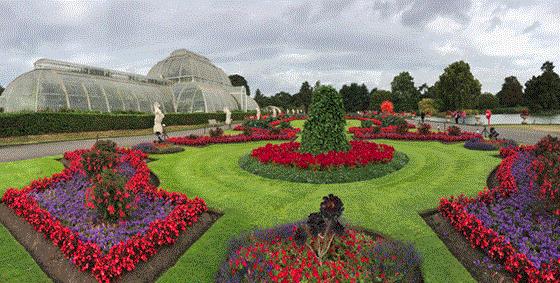 A colorful planting of annuals in front of Kew's Palm House.
A colorful planting of annuals in front of Kew's Palm House.
As for important highlights of the trip, I’ve already given some to Ellen for her buZZ! newsletter. You can read those HERE—after you’re finished with my newsletter, of course. I’ll start with six elements that all the best garden centers seem to share:

Structures—basic
UK garden center owners seem to have figured out that Crystal Palace clones might look spectacular, but they don’t sell more product. They all seem to have settled on a steel A-frame widespan style building with varying amounts of steel roof vs. clear roof over the various departments. It’s not flashy, but it’s functional, spacious and efficient. And it’s not a special-use sort of structure like a greenhouse.
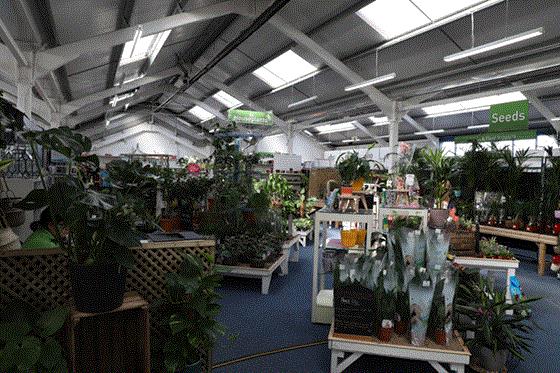 A typical retail structure.
A typical retail structure.
We saw a few exceptions, of course. Redfields had a curving structure rather than A-frame—it reminded me of an airport, the way they like to mimic a wing. Squire’s in Hersham was my favorite structure, as it looked like a conservatory—exactly what I’d hope a British garden center would look like:
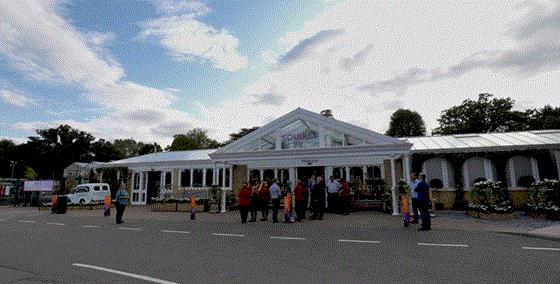
Wide range of products
You can find pure plant nurseries in England, but more typical is a garden center that devotes a large percentage of its interior space to non-plant categories, from gifts and greeting cards to grills. You never see them dabble in a category—if they do clothes or kitchen, they do it big.
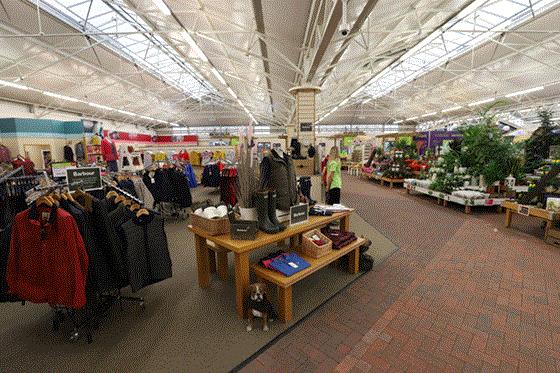
Which is reflected in an interesting statistic shared during IGCA’s general meeting: In the UK, plant sales as a percentage of total sales is just 19.5%—the lowest of all 19 IGCA member countries. The next closest is the Netherlands and Italy, both at a distant 42%. The U.S. scored highest, at 75%. Does that mean the UK doesn’t sell very many plants? No. It means they sell a whole lot of other products.
Food
Food is one such product, and probably the most important one at that, with some centers saying it’s 50% of their revenues. Food in a UK garden center comes in two forms: the food hall (basically a grocery store) and the restaurant. In the past I would have used the term café, but most have grown beyond the simple tea and scone, to breakfast, lunch and dinner, and sometimes even waiters and white tablecloths.
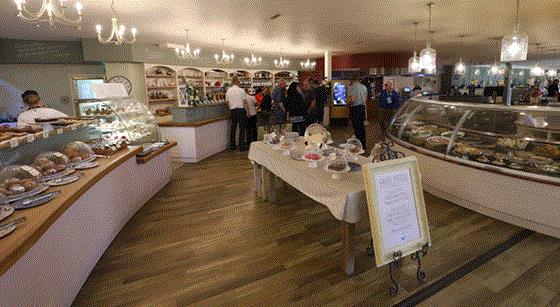
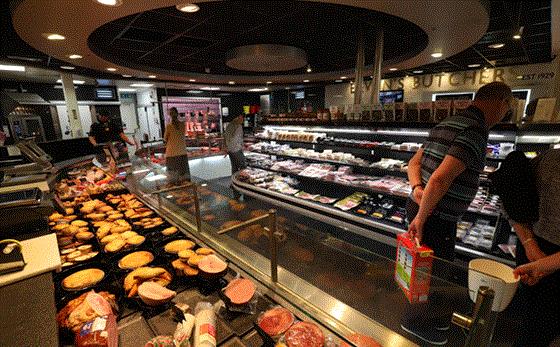
The offerings in both areas are mind-blowing—we could have eaten our way across England. We saw farm-fresh produce, butcher shops, pre-made savory pies, baked goods to rival the best in any specialty shop, an Italian gelato bar ... one wonders if the British ever eat at home!
Events
Food and restaurants draw them in, but so do events, with Christmas being the biggest. Decorating has already started as you read this, with October 1 the big kickoff to the season. The highlight of most is the “grotto,” which is where Father Christmas greets the kiddos. The amount of work that goes into building these displays is as mind-blowing as the food offerings—it’s like a mini trip to Disney or something, complete with actors in costume.
According to Alyson Haywood, a British consultant who helps judge Christmas displays for the UK Garden Centre Association, Christmas decorations bring in an average of $500,000 (with one center reporting $3.4 million!). That’s an average of 7% of the annual turnover. And thanks to the added foot traffic, December is worth 12% of the year’s sales.
Ruxley Manor Garden Centre is trying something similar to boost August sales: Pixie Manor, a multi-room extravaganza of pixies, dragons, a fairy godmother and plenty of local drama students in costume to entertain the 19,000 children and parents (based on this year’s ticket sales).
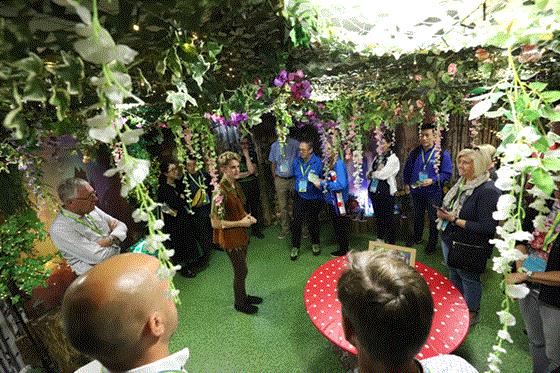
It’s a ton of work to put on the six-week event, and they have to change it up a bit each year to keep the kids coming back. But it must be worth it, as August is now their third-best month.

Concessions
Best described as space rented to outside companies who offer allied products or services: The Edinburgh Woollen Mill, garden sheds and conservatories … I even spotted a cobbler and a car wash. One center owner told me he likes to keep all his offerings in-house, but most seem to like the regular income of leased space and the additional draw they offer.
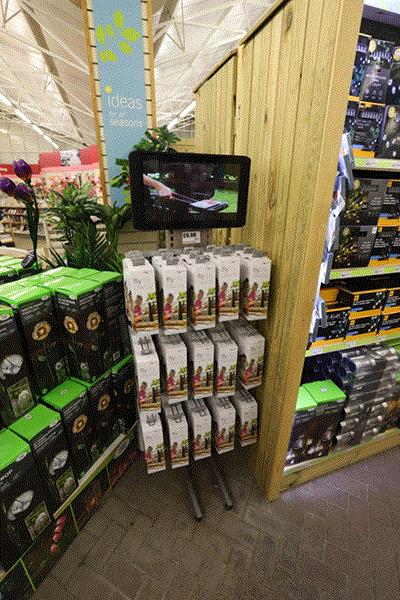
Above is another type of concession you’ll find in every garden center: a rack featuring handi-dusters, no-stick pans, fly-be-gone fly repellers … stuff like that, each with a video showing the product in action. They only take up a few square feet of floor, they sell like mad, and they’re easy money, I was told. As for finances, the company either keeps it stocked and splits the sales with you, or you own the rack and stock outright and keep 100% of the revenues. Product gets changed regularly.
Admittedly, the looped video can be a bit annoying, and the display tends to bring down the ambiance of the garden center a bit, so most put a limit on how many they’ll use.

Great signage
I’m not talking the typical sun, shade, climbers or prices signs. Those are assumed. I’m talking information about the business, its history, its philosophy and its services, posted clearly and repeatedly.
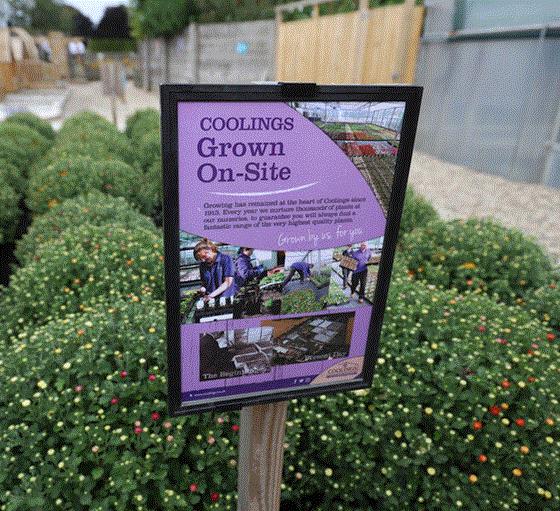
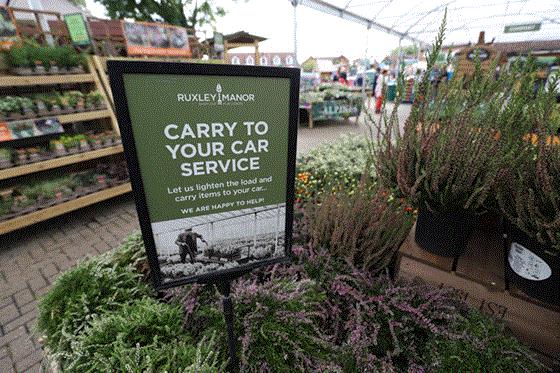
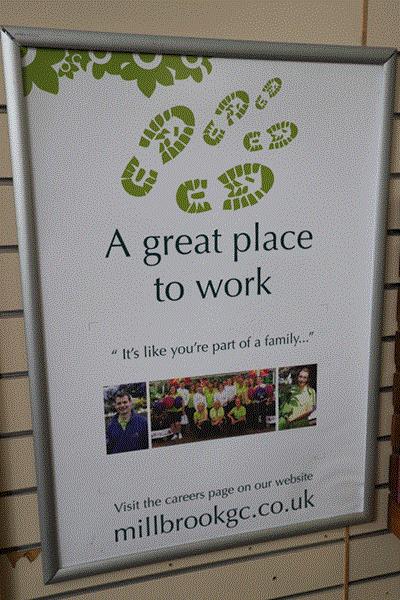
Within 10 minutes of strolling nearly every center, I knew about: their plant guarantee (from two to five years, no questions asked); the history of the business; the fact that they’d help you carry, help you load or even deliver it for you; and that they support local growers (one even had them listed by name). I know more about UK garden centers after one visit than I do about my local Chicago centers after 25 years.
Brexit: The "Dutch will find a way"
If you think our news is wacky in the States, we’ve got nothing on Britain, where it’s nothing but Brexit, 24/7. The citizens have “Brexit fatigue” and everyone I talked to or heard on the news simply wants the whole thing over with, for Pete’s sake. “Deal, no deal, leave, stay … let’s just get it over with so we can move on with our lives!” seems to be the prevailing sentiment.
For businesses, the topic is critical, especially when it comes to sourcing products from Europe. And perishable products are the most affected.
A few days earlier, before the tour started, Laurie and I visited Alton Nurseries with well-known British garden expert Peter Seabrook. We were talking to owner Andy Bunker about some of the product he’d just brought over from the Netherlands, and I asked Andy if he is worried about Brexit impacting that supply.
Yes, he said, explaining that the challenge would be customs paperwork delays, which would result in product sitting on trucks for an extra day or two, affecting quality. But then he smiled and said, “The Dutch will make it work” and went on to explain that he was sure the Dutch industry was already working on a way to get around any potential holdups.
That makes sense—after all, they’ve been world-class traders for 400 years!

Finally ...
Did you know that there’s a connection between the Ryder Cup golf tournament and the seed business. Yup, that’s right. Samuel Ryder, the gentleman for whom the famous tournament between America and Europe is named, owned a packet seed company.
I learned the story in Aylett Nurseries in St. Albans, the town where in the late 1800s Samuel built Ryder & Son, a “Penny Packet” business, which made colorful flowers affordable for the working class.
As he approached 50, overworked and exhausted, a friend suggested golf as a way to get some fresh air and exercise. Samuel excelled at the game, even hiring famous pro Abe Mitchell as his private coach. In 1927, when a match between Britain and America was proposed, he got involved and sponsored the event, donating the trophy that bears his name.
But there’s another Ryder Cup, actually called the St. Albans Horticultural Society Cup, presented by Samuel’s brother, Leonard, in 1931 for a local gardening competition. The cup now resides at Aylett Nurseries, where it’s presented annually in a local allotment (community garden) competition.
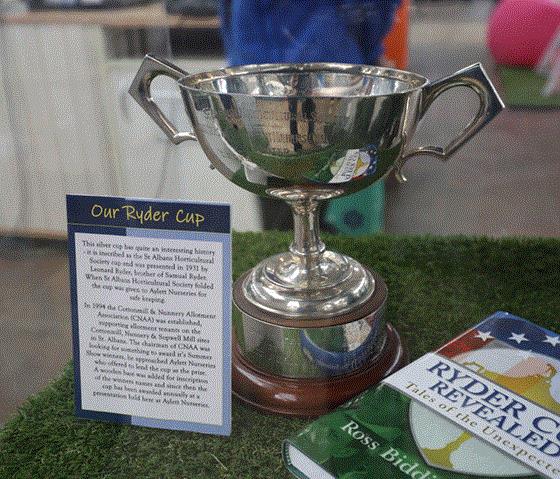 Just think: If you're a good gardener—and British—you might qualify to win the Ryder Cup! The other one.
Just think: If you're a good gardener—and British—you might qualify to win the Ryder Cup! The other one.



See you next time,

Chris Beytes
Editor
GrowerTalks and Green Profit
This e-mail received by 23,841 loyal readers!
Thanks to my loyal sponsors, who help me reach the 23,841 readers of Acres Online in 66 countries. Want to be one of them (a sponsor, that is)? Give Paul Black a shout and he'll hook you up.